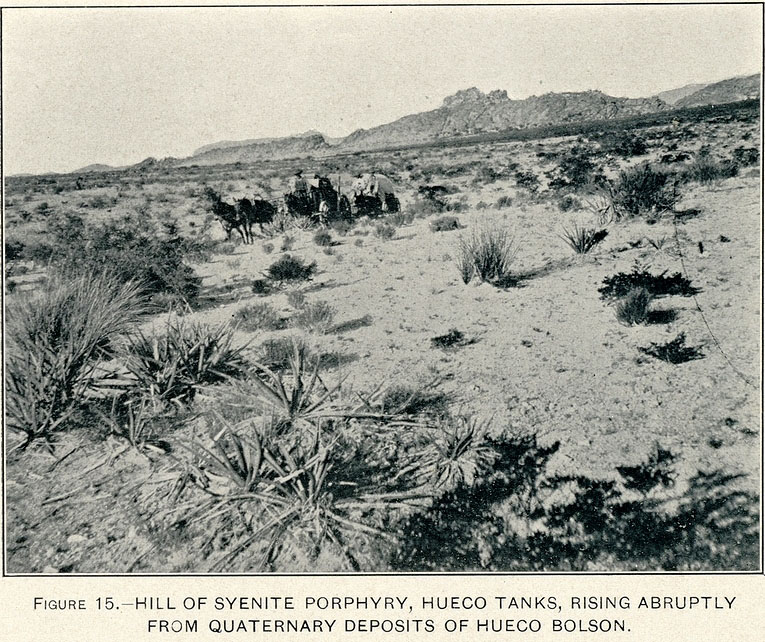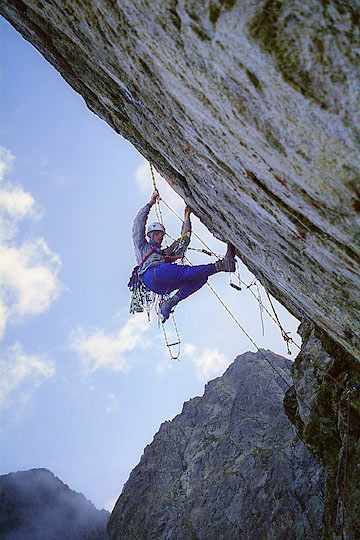|
Crashpad
A bouldering mat or crashpad (also sketchpad) is a nylon-enclosed multi-layer foam pad used for protection when bouldering. Bouldering mats help prevent climbers from injuring themselves from the continuous and repeated falls onto hard or uneven surfaces that are associated with projecting a bouldering problem. Some modern pads include a hinge to fold the pad over into a more compact form (a 'hinge mat'), and some also come with shoulder straps. and even waist straps, for easier carrying to and from the bouldering area. The first commercially available bouldering mat, the "Kinnaloa Sketchpad", was designed and produced in 1992. Design Modern bouldering mats are made in a wide range of sizes and styles (and colors) and can be up to in thickness, and up to in surface area (at the larger end). "Bi-fold" mats (and even "tri-fold" mats), allow the bouldering pad to be more easily transported to the bouldering area, however, the use of any "hinge" for easier folding introduces ... [...More Info...] [...Related Items...] OR: [Wikipedia] [Google] [Baidu] |
Protection (climbing)
Rock-climbing equipment varies with the specific type of climbing that is undertaken. Bouldering needs the least equipment outside of climbing shoes, climbing chalk and optional crash pads. Sport climbing adds ropes, harnesses, belay devices, and quickdraws to clip into pre-drilled bolts. Traditional climbing adds the need to carry a "rack" of temporary passive and active protection devices. Multi-pitch climbing, and the related big wall climbing, adds devices to assist in ascending and descending fixed ropes. Finally, aid climbing uses unique equipment to give mechanical assistance to the climber in their upward movement (e.g. aiders). Advances in equipment are a key part of the rock climbing history, starting with the climbing rope. Modern devices enable climbers to perform tasks previously done manually, with greater control – in all conditions – and with less effort. Examples of replacements include the harness (replaced tying the rope around the waist) ... [...More Info...] [...Related Items...] OR: [Wikipedia] [Google] [Baidu] |
Rock Climbing
Rock climbing is a climbing sports discipline that involves ascending climbing routes, routes consisting of natural rock in an outdoor environment, or on artificial resin climbing walls in a mostly indoor environment. Routes are documented in climbing guidebook, guidebooks, and on online databases, detailing how to climb the route (called the beta (climbing), beta), and who made the first ascent (or FA) and the coveted First ascent#In rock climbing, first free ascent (or FFA). Climbers will try to ascend a route onsight, however, a climber can spend years projecting (climbing), projecting a route before they make a redpoint (climbing), redpoint ascent. Routes range from a few metres to over a in height, and traverse (climbing), traverses can reach in length. They include slab climbing, slabs, face climbing, faces, crack climbing, cracks and overhang (climbing), overhangs/roofs. Popular rock types are granite (e.g. El Capitan), limestone (e.g. Verdon Gorge), and sandstone (e ... [...More Info...] [...Related Items...] OR: [Wikipedia] [Google] [Baidu] |
Highball Bouldering
Bouldering is a form of rock climbing that is performed on small rock formations or artificial rock walls without the use of ropes or harnesses. While bouldering can be done without any equipment, most climbers use climbing shoes to help secure footholds, chalk to keep their hands dry and to provide a firmer grip, and bouldering mats to prevent injuries from falls. Unlike free solo climbing, which is also performed without ropes, bouldering problems (the sequence of moves that a climber performs to complete the climb) are usually less than tall. Traverses, which are a form of boulder problem, require the climber to climb horizontally from one end to another. Artificial climbing walls allow boulderers to climb indoors in areas without natural boulders. Bouldering competitions take place in both indoor and outdoor settings. The sport was originally a method of training for roped climbs and mountaineering, so climbers could practice specific moves at a safe distance from the ... [...More Info...] [...Related Items...] OR: [Wikipedia] [Google] [Baidu] |
List Of Grade Milestones In Rock Climbing
In rock-climbing, a first free ascent (FFA) is the first redpoint (climbing), redpoint, onsight or flash (climbing), flash of a pitch (ascent/descent), single-pitch, multi-pitch climbing, multi-pitch or bouldering, bouldering climbing route that did not involve using aid climbing, aid equipment to help progression or resting — the ascent must thus be performed in either a sport climbing, sport, a traditional climbing, traditional, or a free solo manner. First-free-ascents that set new grade milestones are important events in history of rock climbing, rock climbing history, and are listed below. While sport climbing has dominated overall Grade (climbing), grade milestones since the mid-1980s (i.e. are now the highest grades), milestones for modern traditional-climbing, free-solo-climbing, onsighted & flashed-ascents, are also listed. A climbing route's grade is provisional until enough climbers have repeated it to establish a "consensus". At the highest grades, this can take ye ... [...More Info...] [...Related Items...] OR: [Wikipedia] [Google] [Baidu] |
John Sherman (climber)
John Sherman (born 1959), nicknamed Verm (short for "Vermin") is an American rock climber and a pioneer in the promotion and development of the climbing discipline of bouldering. He is also a climbing writer and outdoor photographer, and the originator of the V-grade system (after his nickname), for grading the technical difficulty of boulder problems, which has since become one of the dominant grading systems worldwide. Climbing career Sherman started climbing at age 15 at Indian Rocks. He came to prominence as one of the developers of the important Hueco Tanks bouldering area in Texas, where he made over 400 first free ascents in the 1980s and early 1990s. As well as being an early adopter of bouldering as a sport, through his books and writings, Sherman played an important role in the promotion and development of the sport around the world. Sherman was the author of the notable 1991 bouldering guidebook, ''Hueco Tanks Climbing and Bouldering Guide'', which launched the impo ... [...More Info...] [...Related Items...] OR: [Wikipedia] [Google] [Baidu] |
Hueco Tanks
Hueco Tanks is an area of low mountains and historic site in El Paso County, Texas, in the United States. It is located in a high-altitude desert basin between the Franklin Mountains (Texas), Franklin Mountains to the west and the Hueco Mountains to the east. ''Hueco'' is a Spanish word meaning ''hollows'' and refers to the many water-holding depressions in the boulders and rock faces throughout the region. Due to the unique concentration of historic artifacts, plants and wildlife, the site is under protection of Texas law; it is a crime to remove, alter, or destroy them. The historic site is located approximately 32 miles (51 km) northeast of central El Paso, Texas, accessible via El Paso's Montana Avenue (U.S. Route 62 in Texas, U.S. Route 62/U.S. Route 180 in Texas, U.S. Route 180), by turning at List of Farm to Market Roads in Texas (2700–2799)#RM 2775, RM 2775. The park consists of three syenite (a weak form of granite) mountains; it is in area and is popular for rec ... [...More Info...] [...Related Items...] OR: [Wikipedia] [Google] [Baidu] |
Top Roping
Top rope climbing (or top roping) is a form of rock climbing where the climber is securely attached to a climbing rope that runs through a fixed anchor at the top of the climbing route, and back down to the belayer (or "second") at the base of the climb. A climber who falls will be held by the rope at the point of the fall, and can then either resume their climb or have the belayer lower them down in a controlled manner to the base of the climb. Climbers on indoor climbing walls can use mechanical auto belay devices to top rope alone. By definition, top roping can only be done on routes that are less than half the length of a typical climbing rope, which means single-pitch routes that are below in height. Top roping is also used in ice climbing, and the related sports of mixed climbing and dry-tooling, and it is used in combination with auto belay devices in both competition speed climbing and competition ice climbing. Top roping is one of the safest forms of rock climbi ... [...More Info...] [...Related Items...] OR: [Wikipedia] [Google] [Baidu] |
Climbing (magazine)
''Climbing'' is a major US-based rock climbing magazine first published in 1970. In 2007, it was bought by Skram Media, the publisher of ''Urban Climber Magazine''. The headquarters of the magazine is in Boulder, Colorado. It is published nine times a year. Climbing was purchased by '' Outside'' in 2021. Golden Pitons Each year, ''Climbing'' gives out a number of awards, called the ''Golden Pitons''. Award categories include: Sport Climbing, Breakout Performance, Climber of the Year, Rusty Piton, Lifetime Achievement, Comeback, Alpine, Boldest Move, and Competition. See also * ''Alpinist'' magazine * ''Summit'' magazine * ''Rock & Ice ''Rock & Ice'' is a magazine published by Outside focusing on rock and ice climbing. The first issue came out in March 1984. The first publisher was Neal Kaptain. George Bracksieck worked for him, beginning in January 1984, and the two became e ...'' References External links * Online magazines published in the United States Spo ... [...More Info...] [...Related Items...] OR: [Wikipedia] [Google] [Baidu] |
Grade (climbing)
Many climbing routes have grades for the technical difficulty, and in some cases for the risks, of the route. The first ascent, first ascensionist can suggest a grade but it will be amended for the ''consensus view'' of subsequent ascents. While many countries with a tradition of climbing developed their own grading systems, a small number of grading systems have become internationally dominant for each type of climbing, and which has led to the standardization of grading worldwide. Over the years, grades have List of grade milestones in rock climbing, consistently risen in all forms of climbing, helped by improvements in climbing technique and climbing equipment, equipment. In free climbing (i.e. climbing rock routes with no aid), the most popular grading systems are the French numerical or sport system (e.g. f7c+), the American YDS system (e.g. 5.13a), and latterly the UIAA scale (e.g. IX+). These systems grade technical difficulty being the main focus of the lower-risk a ... [...More Info...] [...Related Items...] OR: [Wikipedia] [Google] [Baidu] |
Aid Climbing
Aid climbing is a form of rock climbing that uses mechanical devices and equipment, such as aiders (or ladders), for upward momentum. Aid climbing is contrasted with free climbing (in both its traditional or sport free climbing formats), which only uses mechanical equipment for protection, but not to assist in upward momentum. Aid climbing can involve hammering in permanent pitons and bolts, into which the aiders are clipped, but there is also 'clean aid climbing' which avoids any hammering, and only uses removable placements. While aid climbing traces its origins to the start of all climbing when ladders and pitons were common, its use in single-pitch climbing waned in the early 20th century with the rise of free climbing. At the same time, the Dolomites became the birthplace of modern " big wall aid climbing", where pioneers like Emilio Comici developed the early tools and techniques. Aid climbing's "golden age" was in the 1960s and 1970s on Yosemite's granite big ... [...More Info...] [...Related Items...] OR: [Wikipedia] [Google] [Baidu] |







